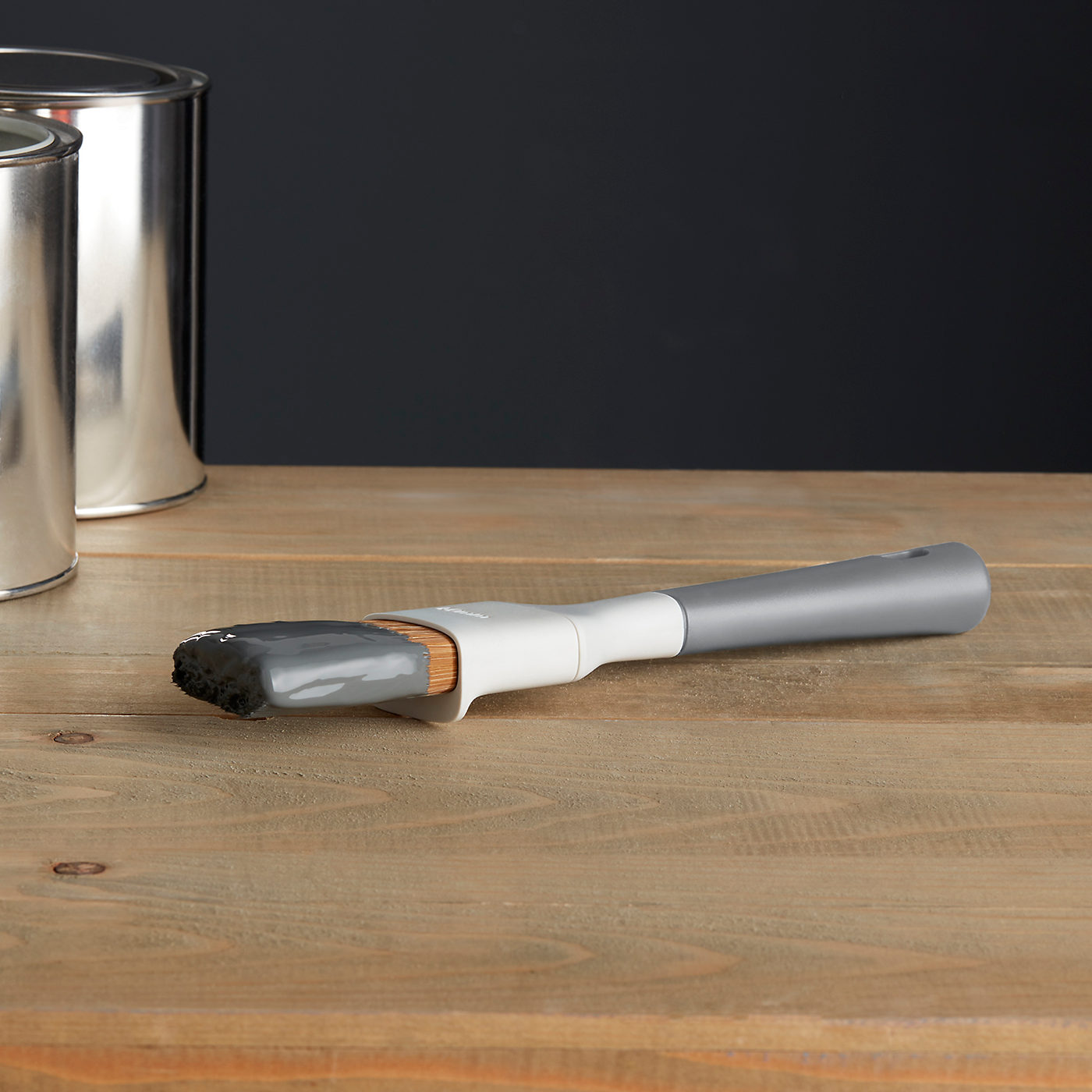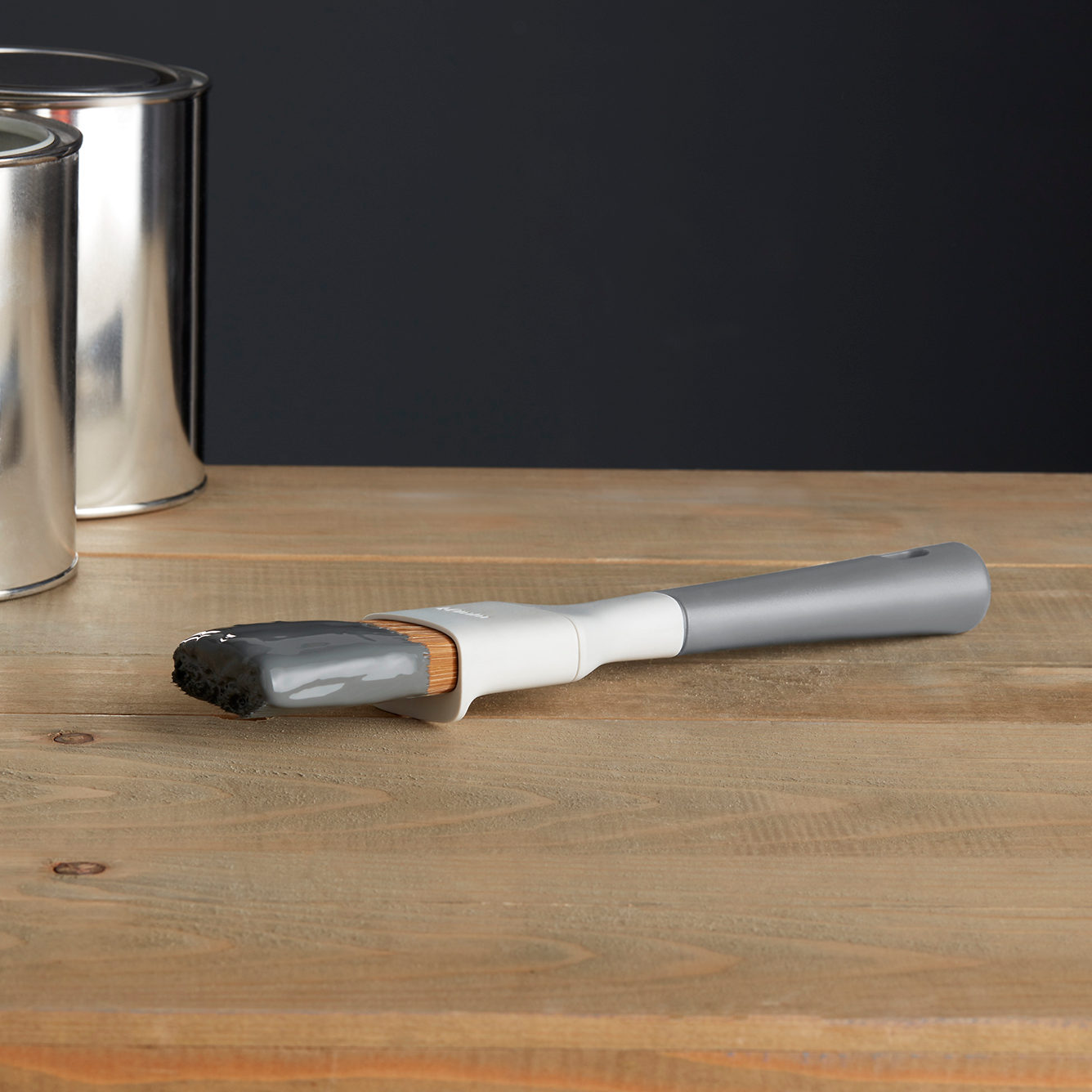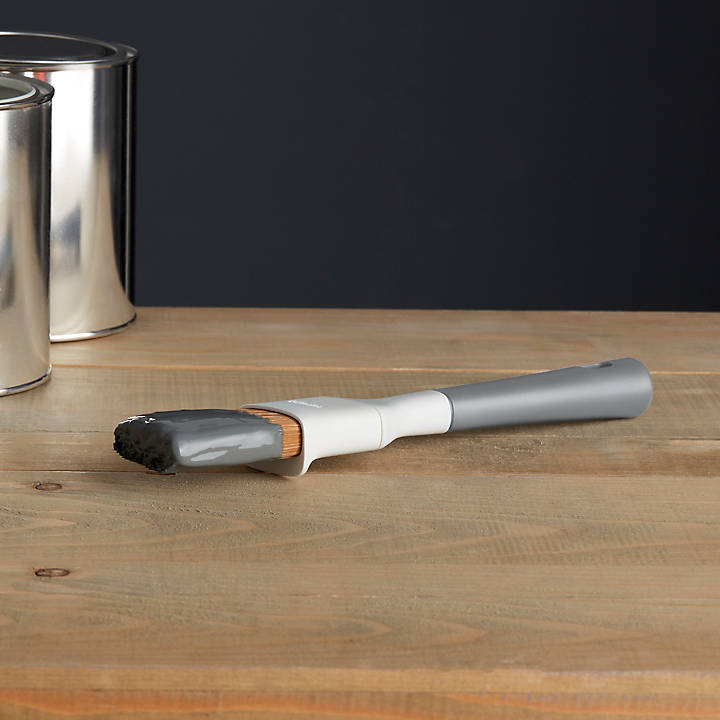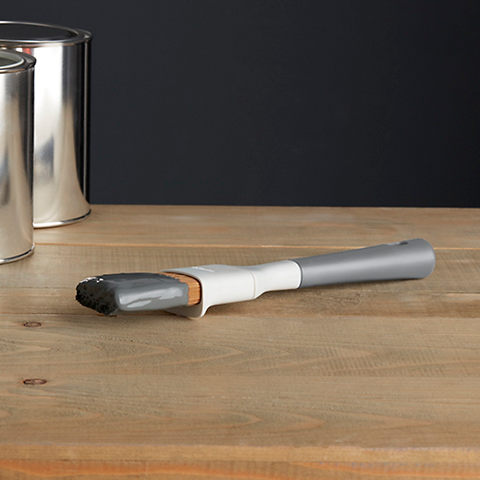How to store paint
When you finish decorating, you’ll probably have leftover paint. And, if it’s stored carefully, you can use it for future projects and save yourself some money and waste. But if you don’t know how to store paint, don’t worry; we’re here to help. We’ll show you how to store any surplus paint in original cans or storage containers, plus how to store paint brushes.
1. Clean the rim of the paint can
Paint must be stored in an airtight container, so any paint left around the lid of the can must be cleaned away so that there's a tight seal when you put the lid back on. To clean the can, wipe away damp paint with a wet cloth and use something metal, such as a straightened wire hanger, to scrape away dried paint. Take care not to let any dry paint fall into the can.
2. Cover the can's opening with plastic
Placing plastic over the can before closing the lid will help keep the paint airtight. You can use cling film or cut a circle out of a plastic bag. Pull it over the opening so it's slightly stretched, but make sure it doesn't tear; otherwise, air will get in and spoil the paint.
3. Replace the can's lid
Put the can lid on and press it down with your hands. Then place a block of wood over the top and hit it with a hammer, mallet, or the end of a screwdriver, to firmly set the lid in place. (mind your fingers!) Try to use a piece of wood that's roughly the same size as the lid, and don't be tempted to hit the lid directly, as that could cause it to get out of shape and not seal properly.
4. Label the paint
Our memories aren’t always the most reliable when it comes to remembering things we did several years ago. So, it’s a good idea to grab a permanent marker and write some notes on the lid of the can. Note down which room the paint was used in, and, if it’s not already on the tin, the colour and where you bought it from. This will make it easy to get more if you need to. You could also add a dab of paint to the tin before you seal it, so you can see the exact colour at a glance. It’s also helpful to add a date of when you used the paint (you can also see if it is too old to use at any time in future!)
5. Where to store paint
To prevent paint cans from rusting or the paint becoming unusable, store them in a cool, dry place where the temperature is above freezing. Place the can on a shelf rather than on the floor to prevent it from getting wet, ensuring it's not in direct sunlight.
A water-based paint tightly sealed and stored correctly can last up to 10 years. And an oil-based paint can last up to 15. So, it's well worth making an effort.
Temperature for storing paint
Paint doesn't last if it's exposed to extreme temperatures. In those conditions, it can dry up or separate and become unusable. So, storing paint in garages or sheds isn't ideal. Instead, keep paint indoors in a utility room or under stairs cupboard, away from radiators and direct sunlight.
How to store paint brushes
Correctly cleaning and storing paint brushes will help them last for years and stop you from paying out for new brushes for every paint job. Here's how to do it:
● Scrape off as much excess paint from the brush as possible using a paint brush and roller cleaning tool.
● If you have used water-based paint, soak them in warm water for a couple of hours. For oil-based paints, soak them in white spirit or a specialist solvent-based brush cleaner for a couple of hours. You can use a glass jar or a specialist paint brush clean and store pod for this.
● Rinse the brushes and dry them with an old cloth.
● Store the dried paint brushes in a clean, dry place.




Re-packaging used paint
If there's only a small amount of leftover paint in a large can, it’s easier to transfer it to a smaller container. This will help prolong its life and reduce the storage space needed. For this, you can use any clean glass jar or plastic storage container with an airtight lid.
Once the paint has been transferred, cover the opening of the container in cling film or plastic before putting the lid on securely. Then label the paint and store it in an appropriate place, as per steps four and five above.

